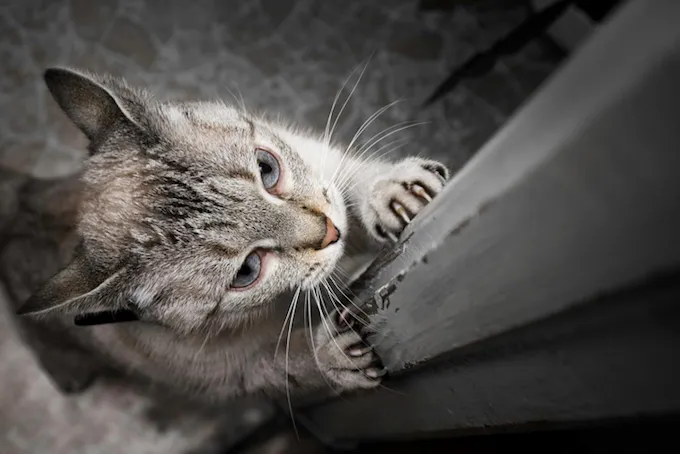Destructive behavior in cats involves scratching, chewing, and urinating. Thankfully, taking steps to modify your cat’s behavior can control the condition.
Technically, the condition is split up into primary and secondary destructive behavior. Additionally, in some cases the condition can bring on other medical problems.
If you see the signs of destructive behavior in your cat, then get to a veterinarian for a proper diagnosis and treatment.
Here’s what you should know about the symptoms, causes, and treatments for the condition.
Symptoms of Destructive Behavior in Cats
The condition produces a wide range of symptoms. Generally, the symptoms can be split into primary and secondary types of the condition.
For example, common primary types include:
- Scratching furniture
- Eating houseplants
- Scratching carpets
Secondary types include:
- Obsessive compulsions
- Grooming excessively
- Destructive behavior to get your attention
Causes of Destructive Behavior in Cats

The cause of the condition can be one of a number of things. For instance, some of the most common causes include:
- Not provided with proper scratching posts
- Lack of exercise
- Lack of human interaction
- Emotional trauma
- Boredom
Unfortunately, the cause of secondary types of the condition is unknown.
Treatments for Destructive Behavior in Cats
Firstly, your vet will ask about your cat’s behavior. It is important you keep detailed records of the behavior.
Secondly, your vet will assess you cat’s behavior.
Thirdly, your vet will take blood and urine tests. This is to see if there is an underlying medical condition at work.
Treatment depends on the cause of the condition. If it is a medical issue, your vet will take steps to target that.
In some cases, medication can be used. As always, if your vet prescribes your cat any medicine, make sure to stick to the correct dose and frequency instructions. Also, complete the full course of medicine.
Generally, your cat’s behavior will need to be modified. This will involve things like providing your cat with proper places to scratch. Your vet will come up with a behavior plan suited to your cat’s needs.
Overall, early training is key to preventing the condition. Your vet can help advise you on proper kitten training techniques.
Have you ever cared for a cat who suffered from this condition? How did your vet help your cat recover? Let us know in the comments section below.









